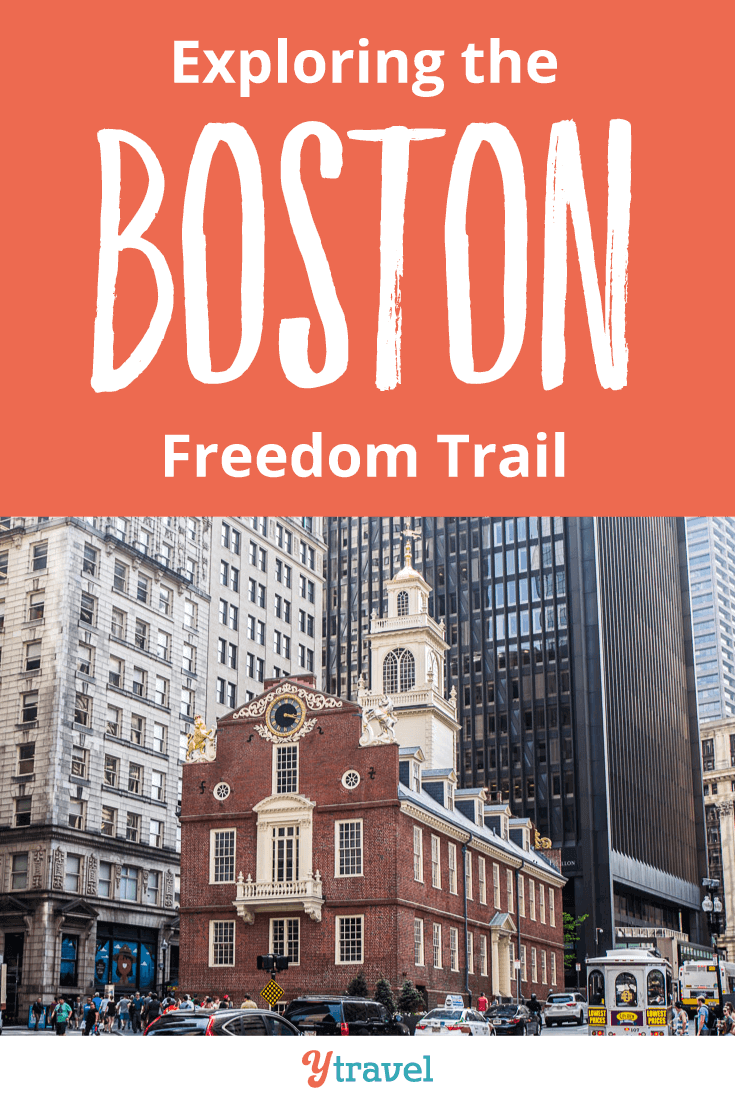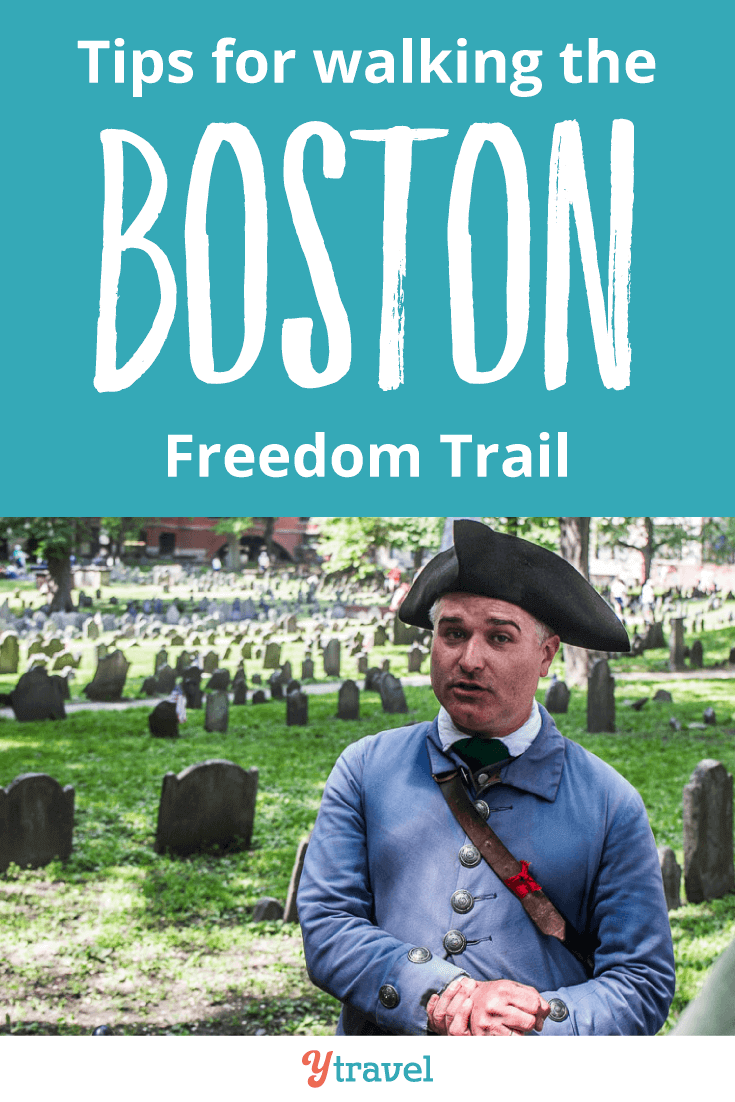This post may contain affiliate links. We may receive a small commission, at no cost to you, if you make a purchase. Read Disclosure.
No trip to Boston would be complete without taking the historic Boston Freedom Trail tour, a walking tour that takes you to the historic sites in the city that shaped the United States over 250 years of history.
Of course, you can explore the Boston Freedom Trail on your own, but why visit one of America’s most historical and oldest cities and not be led around the historic landmarks by a knowledgeable guide for insider tales of high treason, mob agitations, revolutionary actions, and partisan fights of the American Revolution.
Each tour guide is a legendary figure at the forefront of the American Revolution. Isiah Thomas was the publisher of the Massachusetts’s Spy.
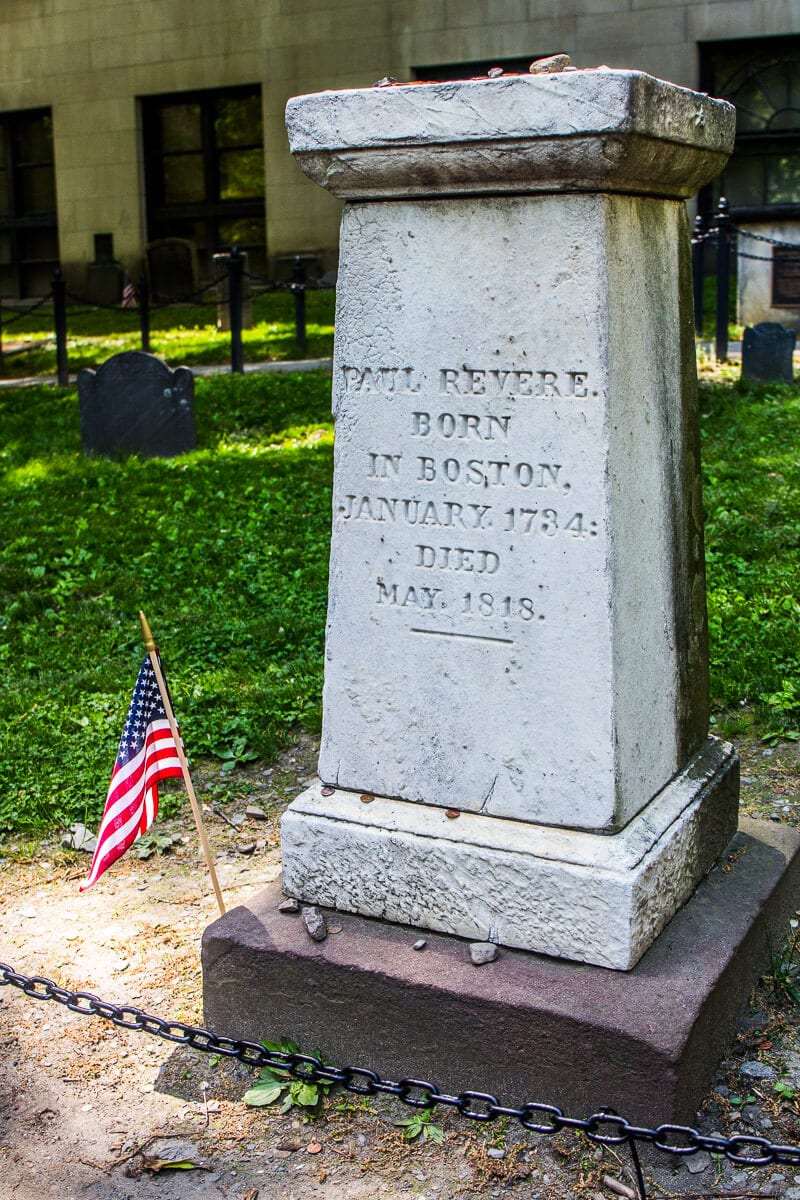
While we’re big fans of self-guided tours, we highly recommend doing the historic Boston Freedom Trail Tour with The Freedom Trail Foundation as a way to get a deeper insight into the history.
They provide three different tours, but for those looking for a general history lesson, you’ll want to embark on the Walk Into History tour.
In this guide, we share our experience of doing the Walk Into History tour, including what it was like and the stops on the trail…
- Our Experience on the Freedom Walk Boston
- Sites On The Boston Freedom Trail Tour
- 1. Boston Common
- 2. The Massachusetts State House
- 3. Park Street Church & Granary Burying Ground
- 4. King's Chapel Burying Ground
- 5. Boston Latin School & Benjamin Franklin Statue
- 6. Old Corner Bookstore
- 7. Old South Meeting House
- 8. Old State House
- 9. The Boston Massacre Site
- 10. Faneuil Hall
- 11. Paul Revere House
- 12. Old North Church
- 13. Copp's Hill Burying Ground
- 14. USS Constitution Museum
- 15. Bunker Hill Monument
- Map of The Boston Freedom Trail
- FAQs About The Boston Freedom Trail
- Tours of The Freedom Trail Boston
- More Massachusetts Travel Tips
- Pin To Save On Pinterest
Our Experience on the Freedom Walk Boston
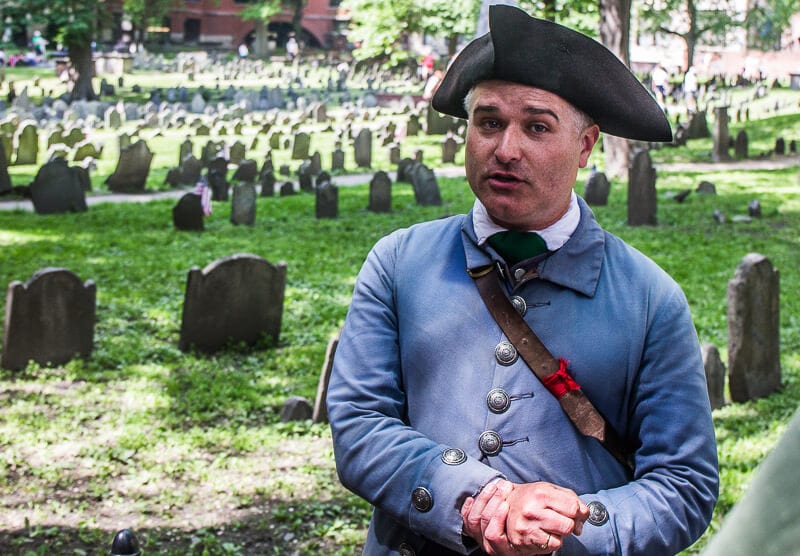
I knew the Freedom Walk Boston would be inspiring and informative as you follow and learn about so many monumental and historical events that helped America gain its Independence from Great Britain.
But, I wasn’t expecting humor.
Our guide, Isiah Thomas, (played by Rob Crean) was dressed in 18th-century clothes – stockings, cloak, three-cornered hat – and he was hilarious.
He had the kind of dry sense of humor that us Australians relate to so well.
The stories he told were quite serious, but it’s all about the delivery. He delivered with such entertainment that we were all disappointed when it ended.
The stories that seemed crazy were so funny, and I wasn’t sure if he was just making them all up.
One thing is for sure, I learned a lot about Boston, the Revolutionary War and all its heroes and villains on this tour because Rob made it fun.
How can you forget stories that are delivered in such a fun way?
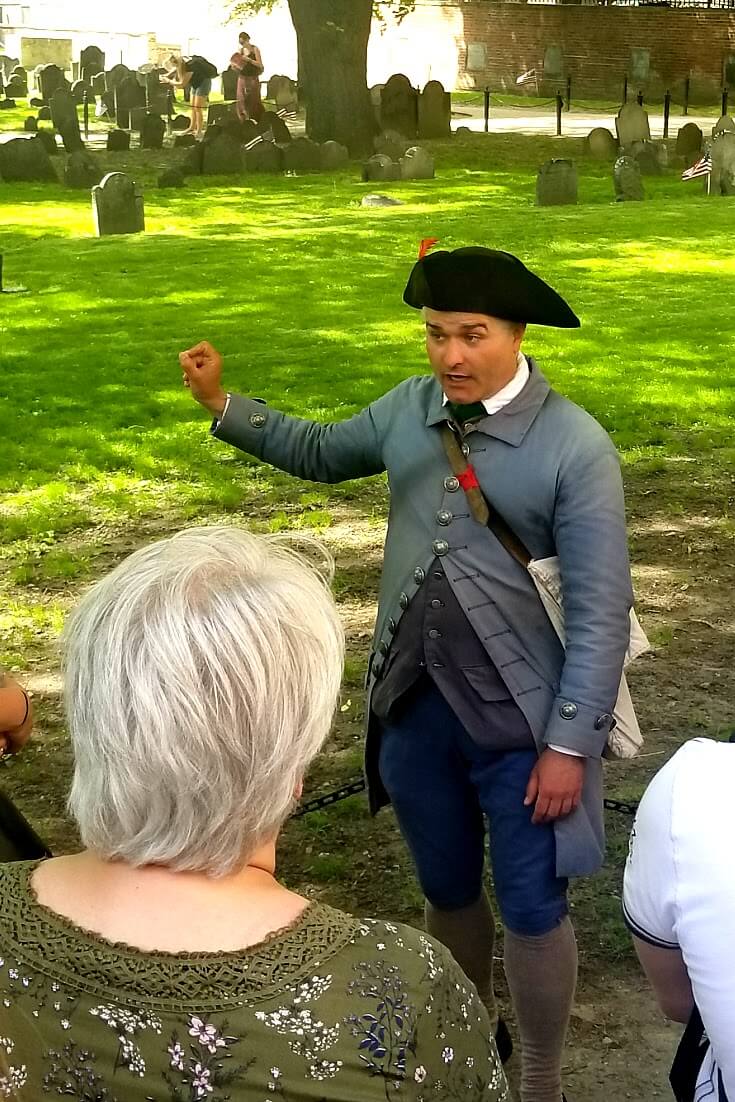
We learned that the Paul Revere story, as most children learn through the poem written by Henry Longfellow, is incorrect.
If you’re not familiar with Paul Revere, he was the hero who rode for miles and miles to let the Americans know the British troops were coming and to save them from their eventual arrest.
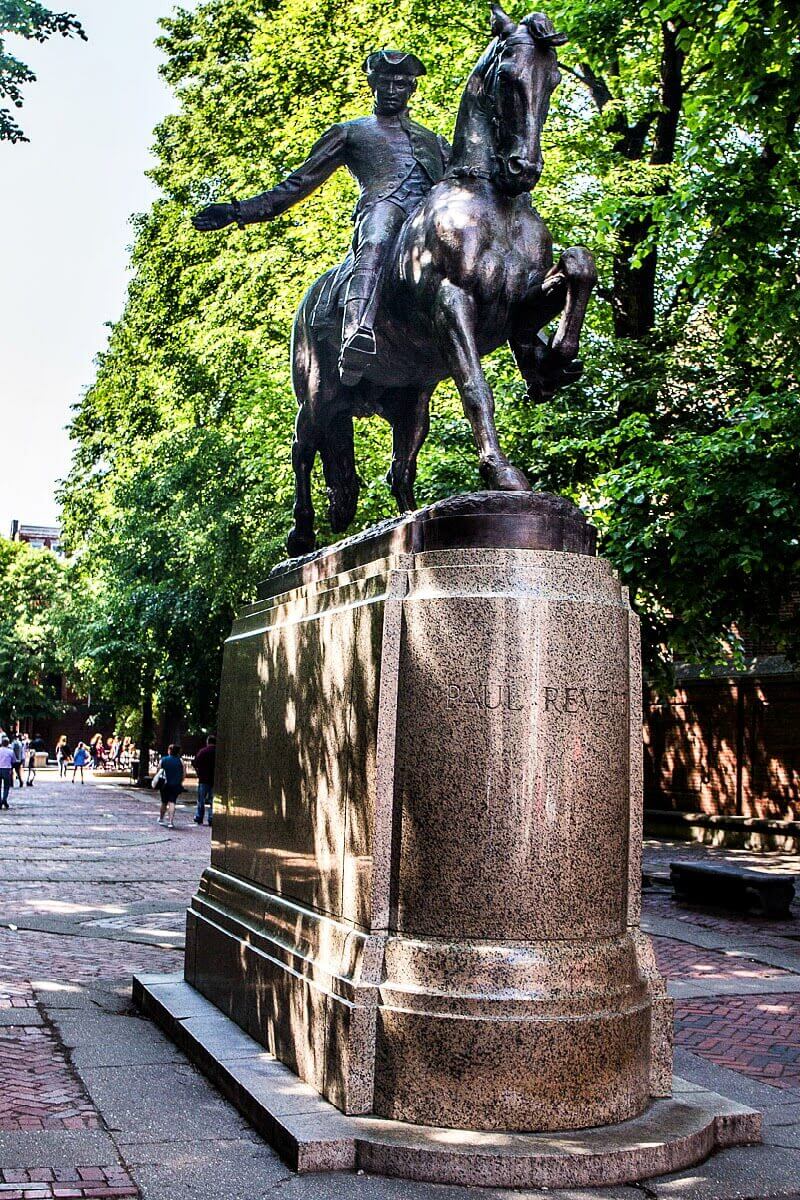
Many parts of the story were changed for poetry’s sake – you know to make a line rhyme better!
I was shocked as I remember my students learning this story through the poem as well. We’ve all been lied to. Someone had to be made the hero and Longfellow’s abridged story fit the poem better.
The telling of the true story was hilarious and brought the calamity of the truth to light.
But, let’s still honor Paul Revere, as he did play a part in helping America become America.
Sites On The Boston Freedom Trail Tour
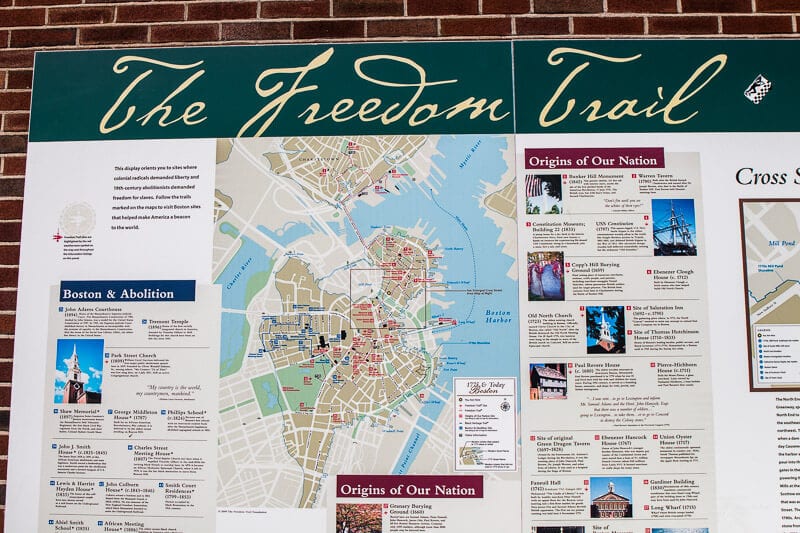
The Freedom Trail in Boston is a 2.5 mile long red line through the city. The Walk Into History Tour is a 90-minute tour featuring 11 of the 16 Freedom Trail sites, some of which are in Boston National Historical Park.
However, there are 16 official sites on the Boston Freedom Trail, which I will mention below.
The Reverse Walk Into History Tour is the same tour, beginning and ending in the reverse locations.
It comprises a unique collection of museums, churches, meeting houses, burying grounds, parks, a ship, and historic markers that tell the story of the American Revolution and beyond.
It was in Boston that the American Revolution began and is what makes this city so fascinating and unique.
Experiencing the Boston Freedom Trail Tour is one of the must-do things to do in Boston.
Some of the historical sites in Boston that we passed and heard stories about on our walking tour were as follows:
1. Boston Common
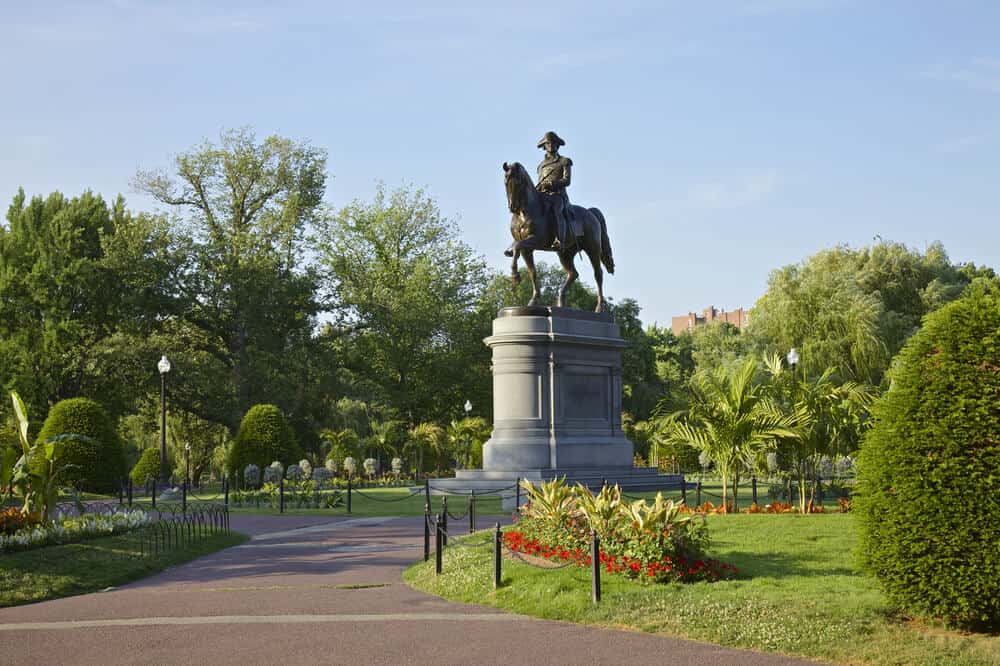
Boston Common is the oldest public park in America, established in 1634, and has witnessed centuries of historical events and societal changes.
Originally used as pastureland and a military encampment, Boston Common has transformed over time into a cherished public space that played a pivotal role in the early days of the nation.
During the 18th century, it served as a gathering point for various public events related to the Revolution, including the mustering of Colonial military before marching on Lexington and Concord.
The common is not only the beginning of the trail, but a living monument to the country’s struggle for independence and the birth of a new nation.
2. The Massachusetts State House
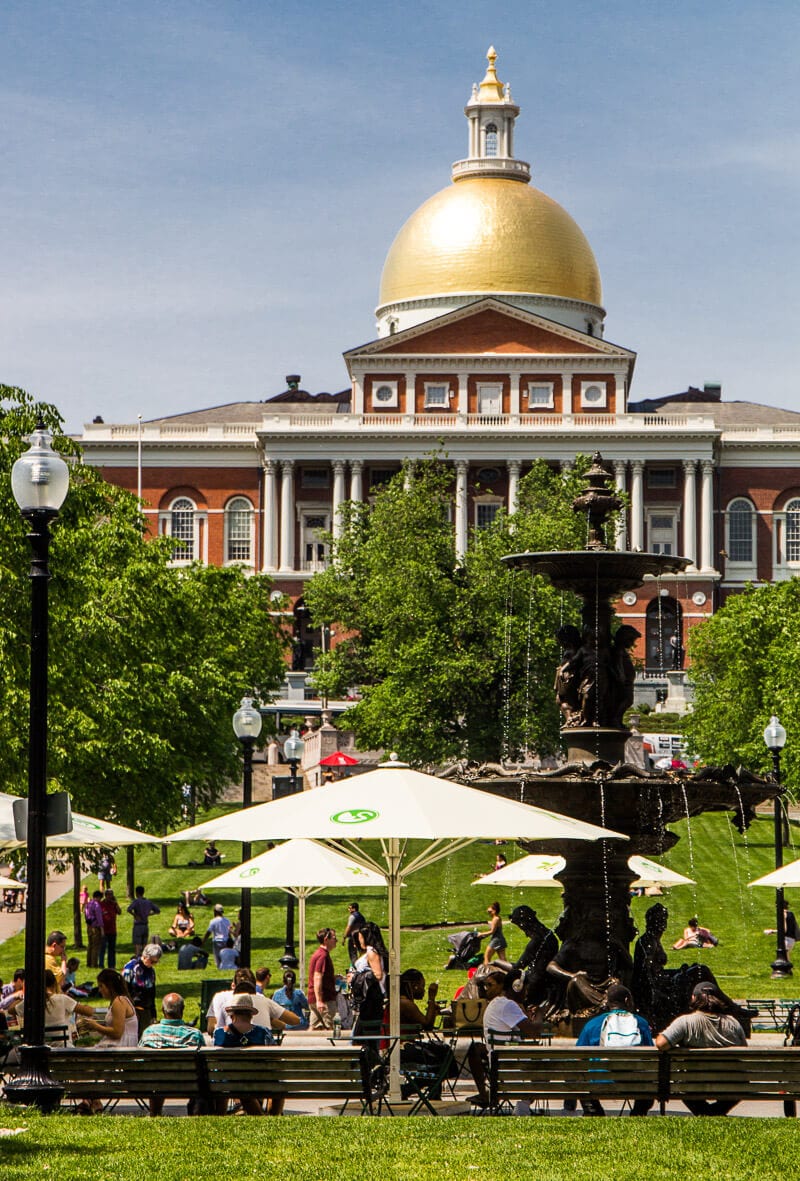
The Massachusetts State House, located on top of Beacon Hill, is America’s oldest functioning State Capitol Building. It was designed by American architect Charles Bulfinch and completed in 1798, and is notable for its neoclassical-federal architecture and golden dome.
This iconic dome, sheathed in copper and covered in 23-karat gold, famously depicted in the film “The Departed,” symbolizes the state’s rich heritage.
The State House’s significance on the Boston Freedom Trail cannot be understated. After the Revolutionary War, the leaders of the state sought a grander and more majestic home for the expanding government, leading to the construction of the current State House.
Today, the Massachusetts State House houses the State House Art Collection, which commemorates significant historical events and pays tribute to influential figures who have shaped the state’s governance.
3. Park Street Church & Granary Burying Ground
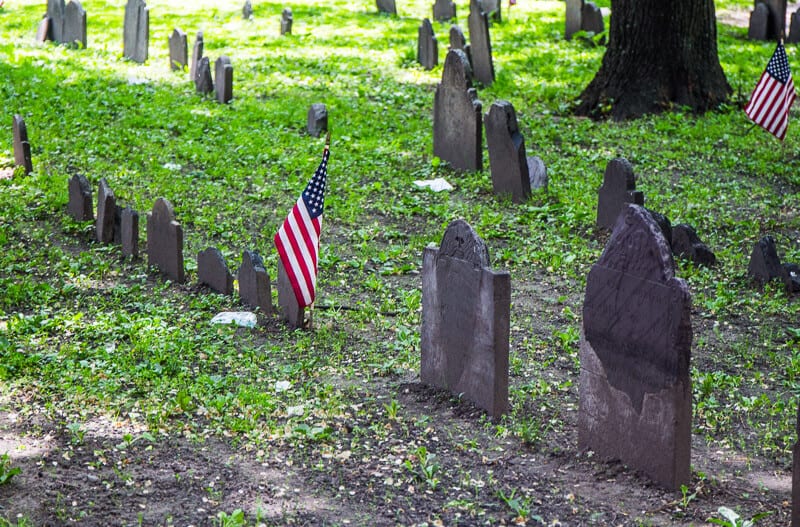
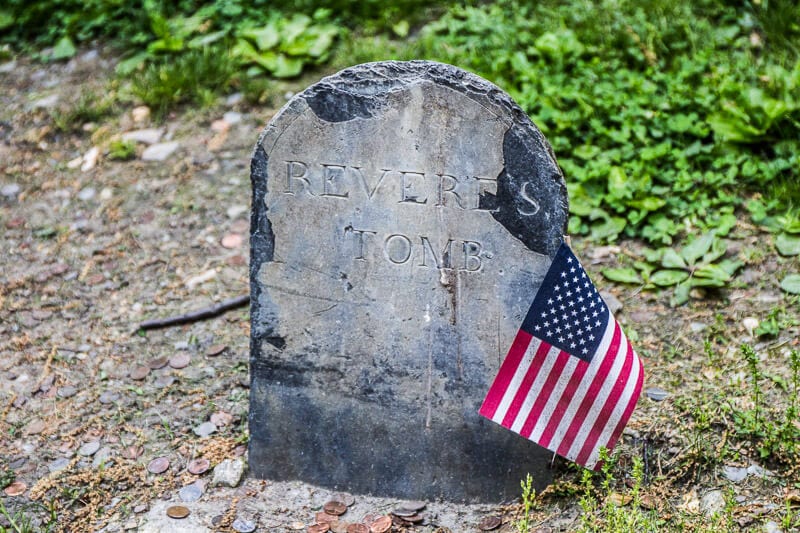
Park Street Church sits at the corner of Park and Tremont Streets, atop the site of Boston’s town grain storage building.
The church has witnessed significant historical events, including the first rendition of the hymn “America” and William Lloyd Garrison’s seminal antislavery speech in 1829, marking its profound impact on the nation’s trajectory.
Park Street Church also stands across the road from the most famous burial ground on the Freedom Trail, Granary Burying Ground.
This is the burial ground for about 5,000 people, including the victims of the Boston Massacre, as well as notable figures such as Paul Revere, John Hancock, Samuel Adams, and Robert Treat Paine.
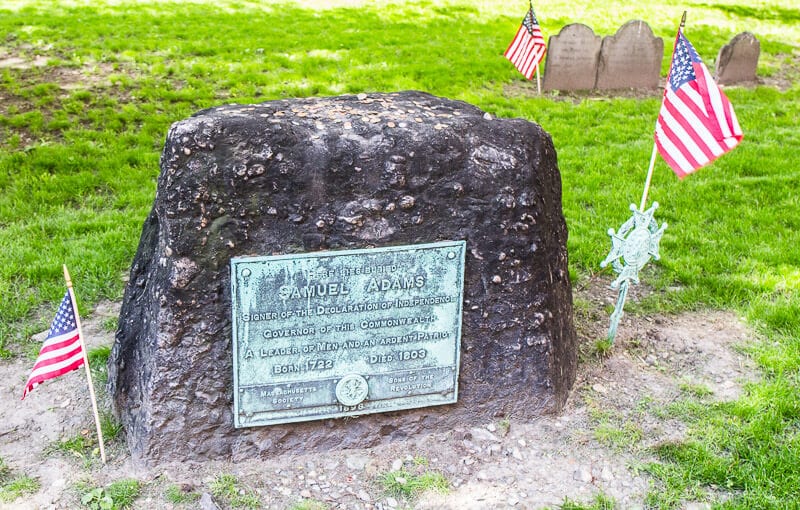
Across the road is the Beantown Pub, which is the only place in the world you can drink a cold Sam Adams overlooking a cold Sam Adams – pretty cool.
We attempted to go back and do that after the tour but it was too busy.
4. King’s Chapel Burying Ground
Another important burial ground is at King’s Chapel, which was founded in the 1600s and was recognized as New England’s first Anglican Church.
After the American Revolution, the church became Unitarian which it still is today.
The church is unique in that there is no steeple, but there is a 2,400-pound bell in the bell tower, which was said to have been crafted by Paul Revere.
In the burial grounds, you’ll find the resting place of first woman to step off the mayflower, Mary Chilton, as well as Massachusetts’ first governor, John Winthrop, William Dawes (Paul Revere’s compatriot), and the Reverend John Cotton, among others.
5. Boston Latin School & Benjamin Franklin Statue
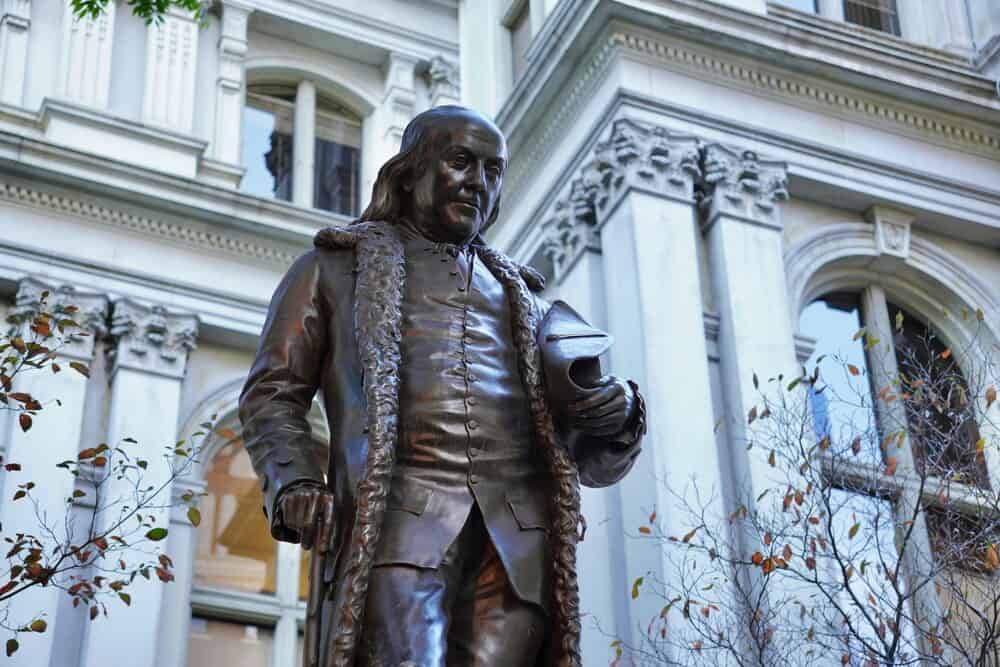
Founded in 1635, Boston Latin School is considered the oldest public school in the United States. Its establishment even predates even Harvard College!
The school was based on the English grammar school model and aimed to provide young men with a classical education as preparation for university entrance.
Boston Latin School is the pioneer of early development of American education, representing the commitment to intellectual growth and academic excellence in the New World.
It was also the school that Benjamin Franklin attended, hence the statue of him outside the building.
6. Old Corner Bookstore
The Old Corner Bookstore was built in 1718 as an apothecary shop and residence, making it the oldest commercial building in the city.
It was then transformed into a bookstore in 1828, as well as the publishing house of Ticknor and Fields, becoming a prominent literary hub in 19th-century Boston.
The site has a deep connection to the city’s cultural heritage, serving as a the birthplace for many renowned authors during the American Renaissance period, including “The Scarlett Letter” by Nathaniel Hawthorne and “Paul Revere’s Ride,” the famous poem by Henry Wadsworth Longfellow
As a designated stop on the Boston Freedom Trail, the Old Corner Bookstore played a pivotal role in shaping American literature during the 19th century.
7. Old South Meeting House
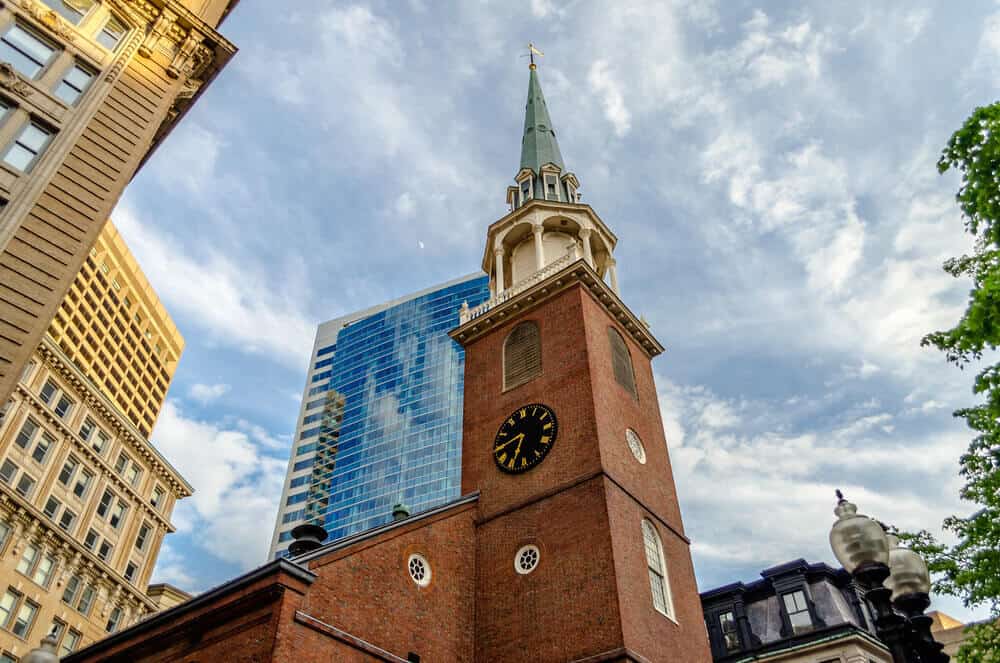
The Old South Meeting House is a historic Congregational church located at the corner of Milk and Washington Streets.
It was constructed in 1729 as a Puritan house of worship, and quickly became the largest building in colonial Boston and a central gathering place for civic discourse.
Notably, it served as the venue for the meeting that led to the Boston Tea Party in 1773, signifying its crucial role in the American Revolution and the fight for independence from British rule.
8. Old State House
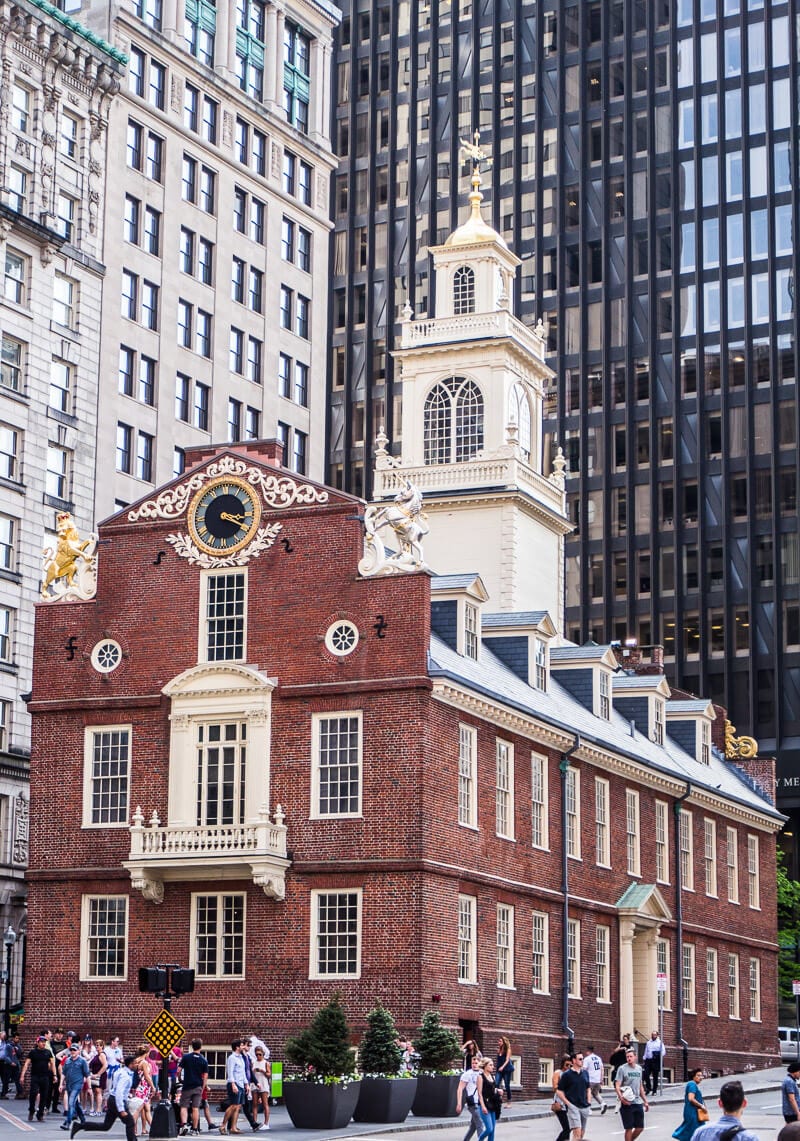
The Old State House was where the Declaration of Independence was read from the balcony in 1776.
Initially known as the “Town House,” this building served as a hub for colonial and later state government activities until 1798.
Its significance extends beyond governance, as it also housed a bustling merchants’ exchange on its first floor, epitomizing its multifaceted role in colonial society.
Today, the Old State House stands as the oldest surviving public building in Boston, a testament to the city’s enduring legacy and resilience.
9. The Boston Massacre Site
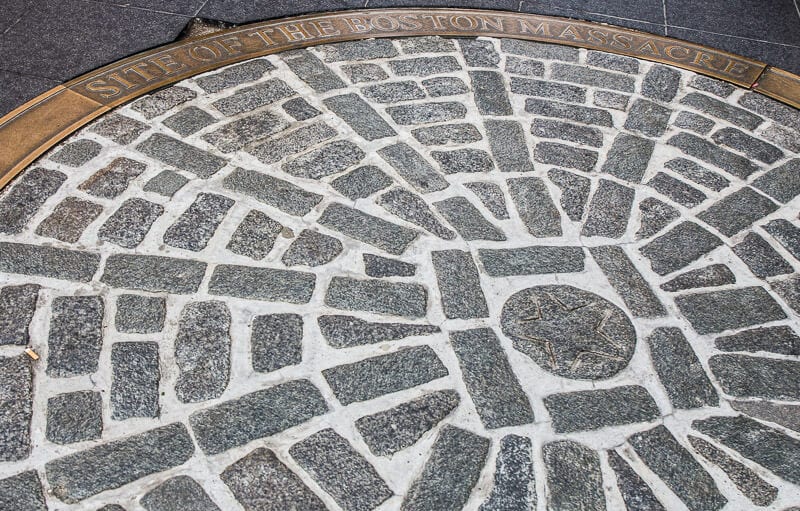
The site of the Boston Massacre is located at the intersection of State and Congress Streets in Downtown Boston.
The tragic incident occurred on the evening of March 5, 1770, when a confrontation between American colonists and British soldiers escalated into a deadly riot.
This harrowing event, marked by bloodshed and tension, became one of the defining moments that propelled the American Revolution forward.
The site is marked by a cobblestone circle beneath the Old State House balcony and serves as a poignant testament to the enduring legacy of those who stood on the precipice of change.
10. Faneuil Hall
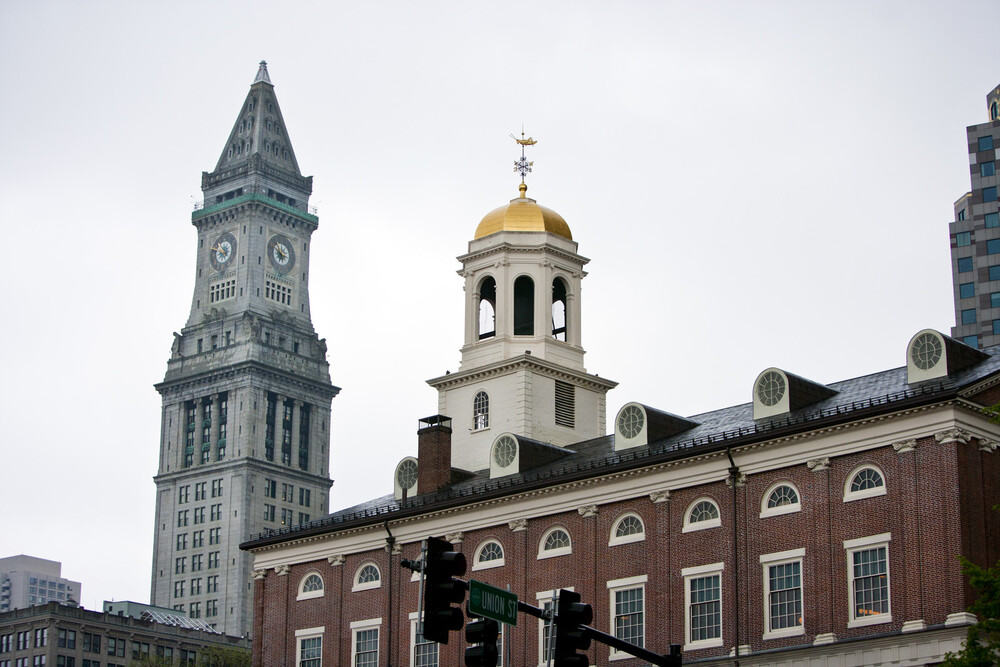
Faneuil Hall is another historic building that was constructed in 1742 and once served as a marketplace and meeting hall, as well as a focal point for civic engagement and political discourse.
Faneuil Hall served as a rallying ground for influential figures such as Samuel Adams and James Otis, who fervently advocated for independence from British rule.
This historic site played a pivotal role in the American Revolution, hosting impassioned speeches and galvanizing the spirit of rebellion among colonists.
11. Paul Revere House
The Paul Revere House was built circa 1680 and served as the colonial home of the renowned patriot and silversmith during the tumultuous era of the American Revolution, Paul Revere.
Today, the Paul Revere House stands as a living artifact, offering a compelling opportunity to learn more about Revere and his involvement in the Revolution.
12. Old North Church
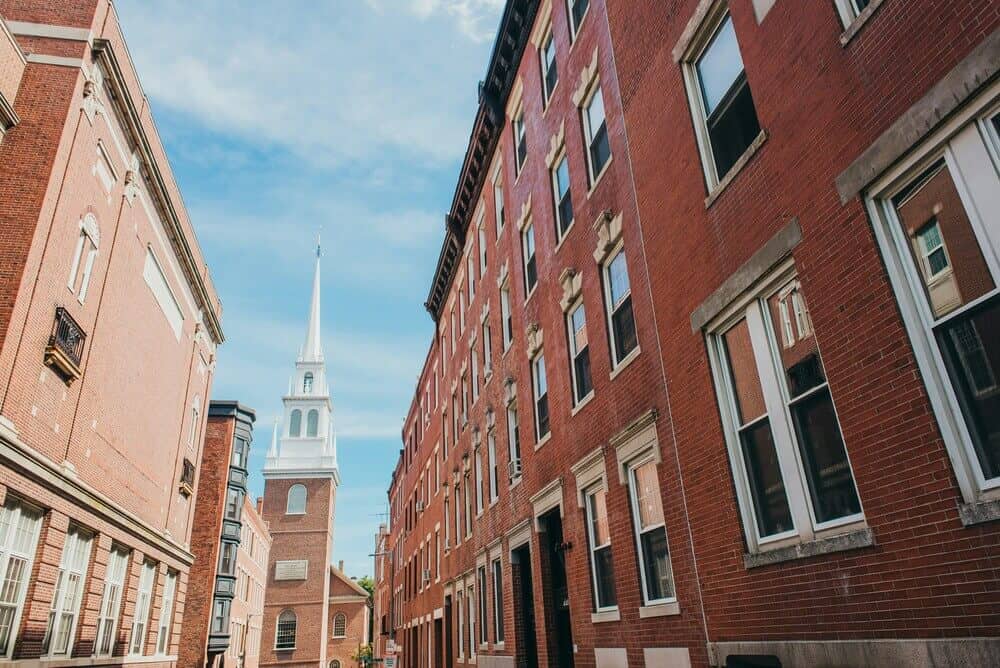
Now on to Boston’s North End, where you’ll find the Old North Church.
Built in 1723, this iconic church, initially named Christ Church, is the oldest surviving church building in Boston and a cherished landmark along the renowned Freedom Trail.
The Old North Church’s pivotal role in igniting the flames of revolution is encapsulated in the famed midnight ride of Paul Revere, where two lanterns were hung from its steeple, signaling the approach of British troops.
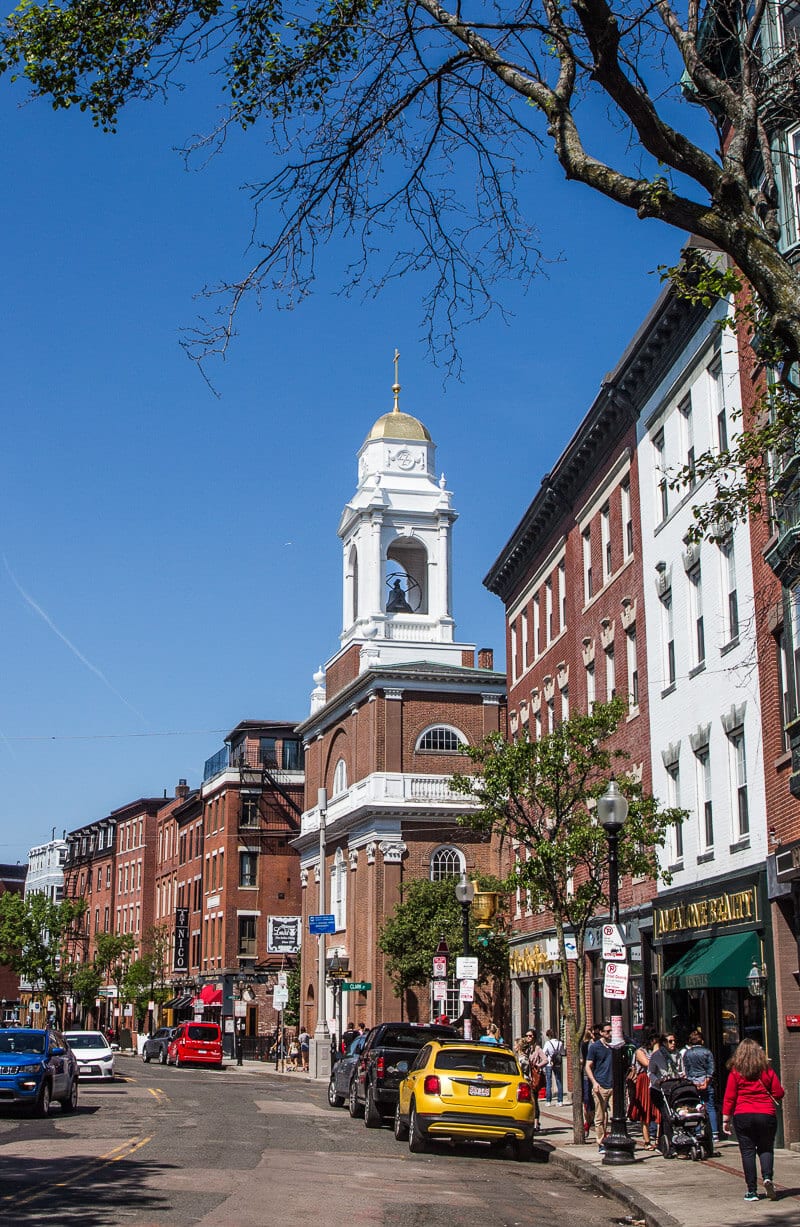

This daring act served as a clarion call to arms, galvanizing the colonists in their pursuit of liberty.
13. Copp’s Hill Burying Ground
Copp’s Hill Burying Ground is a hallowed cemetery that holds the title of Boston’s largest colonial burying ground, serving as the final resting place for a diverse array of individuals who shaped the fabric of the burgeoning city.
From merchants and artisans to liberated slaves, the cemetery holds the resting place of the lesser-known heroes of Boston’s early society.
14. USS Constitution Museum
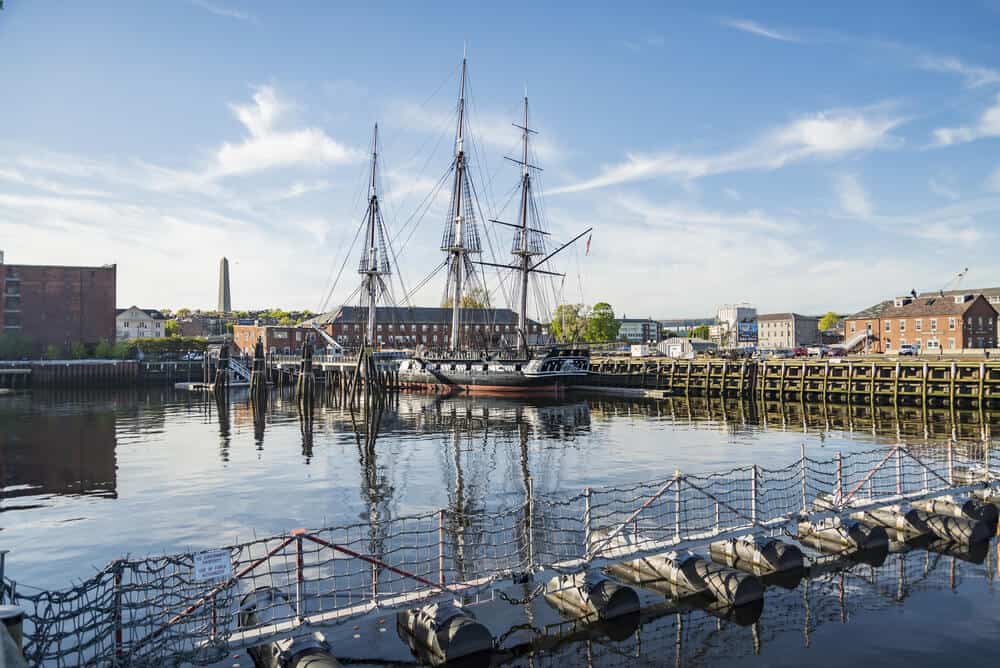
The USS Constitution Museum, nestled within the historic confines of The Charlestown Navy Yard, stands as a living chronicle of America’s maritime legacy and is where you will find the retired USS Constitution ship, fondly known as “Old Ironsides.”
This museum, located adjacent to the former Navy ship in Boston Harbor, portrays the valor, resilience, and indomitable spirit of America’s sailors over the years.
15. Bunker Hill Monument
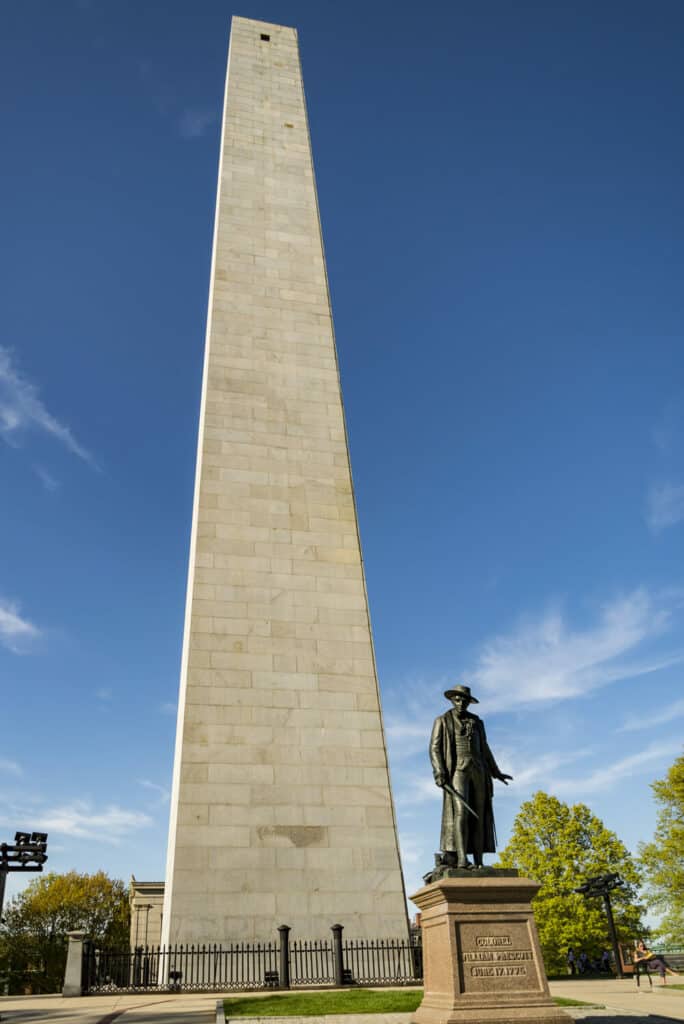
The Bunker Hill Monument is a soaring granite obelisk that dominates the skyline of Boston and is the first public monument erected to commemorate the pivotal Battle of Bunker Hill.
Standing proudly atop Breed’s Hill, the monument serves as a timeless tribute to the courage and sacrifice of the colonial forces during the early stages of the American Revolution.
It was constructed in 1843, and its cornerstone, laid by the esteemed Marquis De Lafayette on the battle’s 50th anniversary, symbolizes the enduring legacy of the Revolutionary War.
Designated as a National Historic Landmark, the monument transcends its role as a war memorial, standing as a living testament to the nation’s commitment to honoring its revolutionary heritage.
Map of The Boston Freedom Trail
To help you navigate your way along the Boston Freedom Walk, here is a helpful map with each of the stops…
FAQs About The Boston Freedom Trail
Is the Boston Freedom Trail Tour kid friendly?
It was quite a hot day when we did the Boston Freedom Trail tour and we had spent the morning on the Duck Tour and doing a fair bit of walking.
I was concerned the girls would have a meltdown. However, we found shady spots along the way, and our 10 year old Kalyra said she really enjoyed the tour. She was attentive and curious.
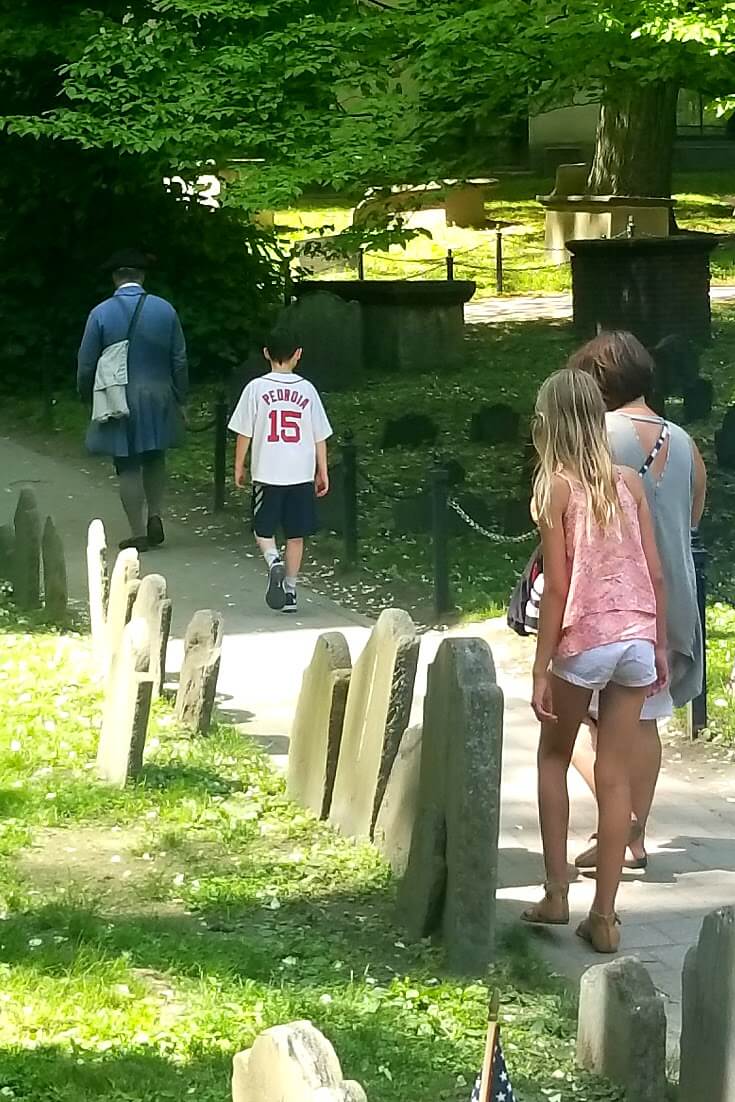
The full tour may be a bit long for younger kids, but if they love history, it’s a fantastic Boston attraction to do with kids.
It’s so informative and funny and will sure beat learning about it in those way too thick and boring history books.
The guides are dressed up and take on the persona of a character from the Independence period which is engaging for them.
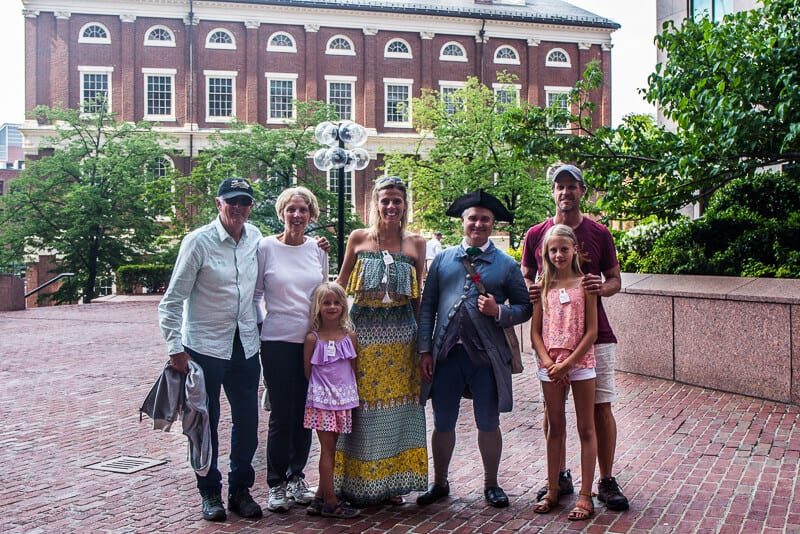
These are the types of things we love to do to help homeschool our kids.
We let interactive real life experiences teach them. It means we have more time to pursue passions and talents and to spend together creating memorable moments.
How long is the Freedom Walk in Boston?
If you take a guided tour, it takes 90 minutes to walk the Freedom Trail in Boston. If you do it yourself, allow at least three hours to complete the self-guided tour.
Tours of The Freedom Trail Boston
The Boston Freedom Trail Foundation Tour starts from the Boston Common Visitor Center and takes approximately 90 minutes. They depart at 11am, 12pm, and 1pm daily.
There are three tours to choose from, Walk Into History (Pink), African American Patriots Tour (Blue) and the Revolutionary Women Tour (Green).
We took the “Walk Into History” tour with the Freedom Trail Foundation which is the standard history lesson, but there are lots of organizations that lead tours along the trail. The walk is mostly flat all the way.
You can also book tickets in advance on Get Your Guide. We like their cancellation policy – up to 24 hours in advance!
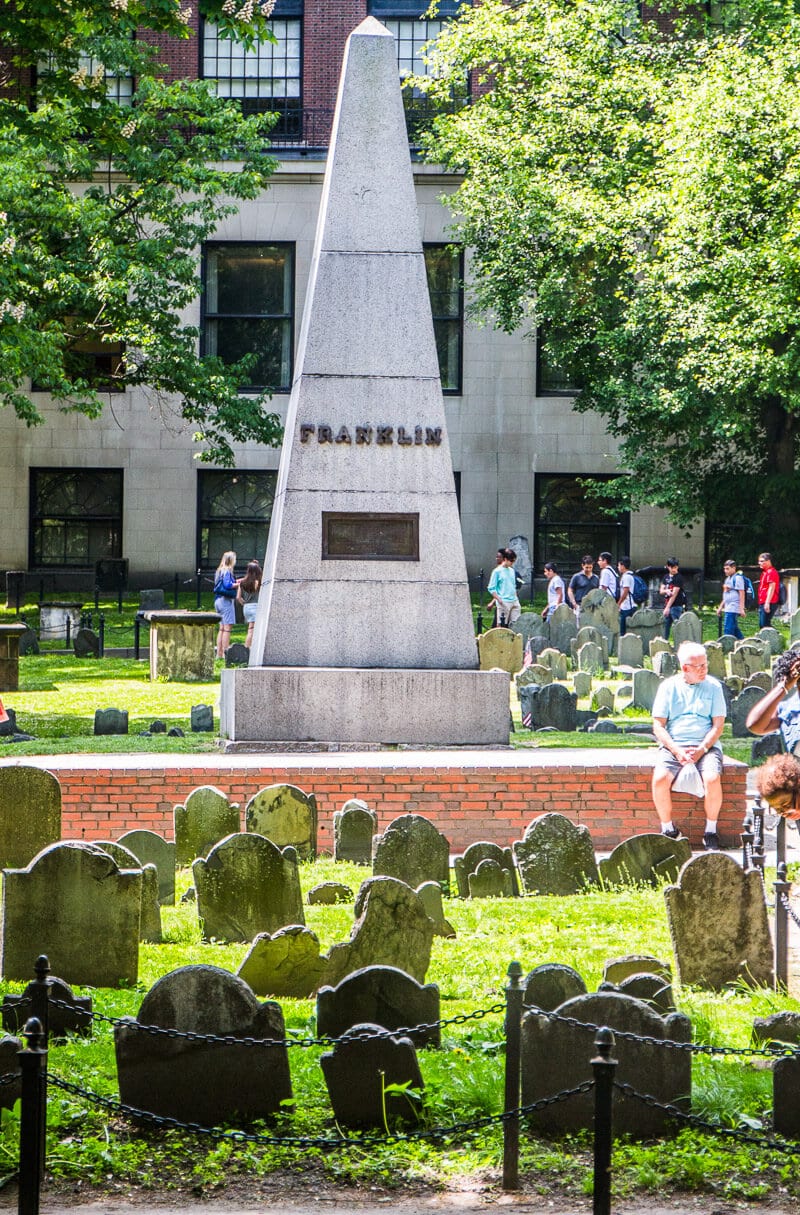
If you plan on visiting a few downtown Boston attractions, the Go Boston Card will save you money and includes the Boston Freedom Trail tour and entry into some of the historical sites along the trail like Paul Revere’s House. Get your Go Boston Card here.
If you walk the Freedom Trail on your own, the trail is marked with a painted or bricked red line that is easy to follow. Signs along the Freedom Trail identify each of the 16 historical stops.
Allow at least three hours to take a leisurely pace and enjoy all the historical markers.
Don’t miss this list of things to do in Boston with kids that we loved (you can do them without as well!) We also loved this Harvard University walking tour.
Boston Travel Video
More Massachusetts Travel Tips
Thinking of visiting other parts of Boston or Massachusetts? Here are some other helpful guides!
- What to do in Boston
- How to see a Boston Red Sox game at Fenway
- How to spend 3 days in Martha’s Vineyard
Pin To Save On Pinterest
